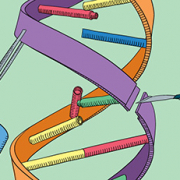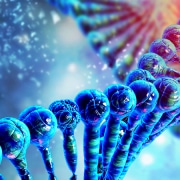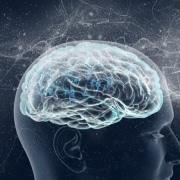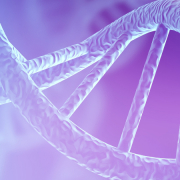Parkinson’s disease: understanding the cause
In light of new research, we explore the role genes and their products can play in the onset of Parkinson’s disease
Often, we are aware of the specific gene or genes that are associated with a given condition. What we know less about, however, is how and why variants in these genes have the effects they do. In many cases, we also need to learn more about the pathways between these genes and their products to begin to find effective treatments.
A new piece of research into the causes of Parkinson’s disease shows that it is possible to better understand the way neurodegeneration occurs – by first identifying genes and then tracking the proteins that they make.
About Parkinson’s
Parkinson’s disease is a serious neurodegenerative disorder that causes movement problems such as tremors and difficulty walking. As the disease progresses, cognitive symptoms can also begin to present in those affected.
The condition is characterised by the death of neurons in a part of the brain called the substantia nigra. These neurons produce dopamine and are indirectly involved in controlling movement. The direct cause of this cell death is unclear, though there is evidence that both genetic and environmental factors can affect the chance of developing the condition.
The most common treatment involves supplementing a dopamine precursor called levodopa, which is converted to dopamine within the brain. This approach helps relieve motor symptoms, but does not slow down or stop the progression of cell death.
Around 15% of people with Parkinson’s have a family history of the condition. From studying the genomes of affected families, variants have been identified in at least 23 different genes that increase the chance that a person will be affected.
Some of these variants also increase the risk that carriers will develop early-onset forms of the disease; in some cases, even people under 20 years old can be affected.
Recycling mitochondria
A recent study published in Science Advances examined the protein products of two genes strongly associated with hereditary Parkinson’s disease – PINK1 and PRKN.
Both of these genes are known to be associated with recycling damaged mitochondria: small structures within cells that perform specific functions. When mitochondria get damaged – usually as they age – we know that they are broken down and recycled by the cell, but how this process contributes to neurodegenerative disease is poorly understood, and had not been observed before.
Using a combination of time-lapse imaging, fluorescent tagging and a powerful microscope, the team were able to track mitochondria over the course of a day.
Observations and insights
They discovered that when a mitochondrion was damaged, parkin proteins (encoded by the PRKN gene) would encircle it and initiate mitophagy – a specific type of destruction. The PINK1 protein allows parkin to bind to the mitochondria, so if either are non-functional the process cannot be completed and damaged mitochondria are not recycled affecting the function of the cell, ultimately leading to cell death.
“This work gives us unprecedented insight into mitochondria’s life cycle and how they are recycled by key proteins that, when mutated, cause Parkinson’s disease,” said Professor Ken Nakamura, who led the research. “It suggests that mitochondrial recycling is critical to maintaining healthy mitochondria, and disruptions to this process can contribute to neurodegeneration.”
“Our future studies will investigate how these pathways contribute to disease and how they can be targeted therapeutically,” he added.
For more information about how genomics is helping us to better understand and treat neurological conditions, visit our genomics in practice page.
–




 BBC/Minnow Films
BBC/Minnow Films 



